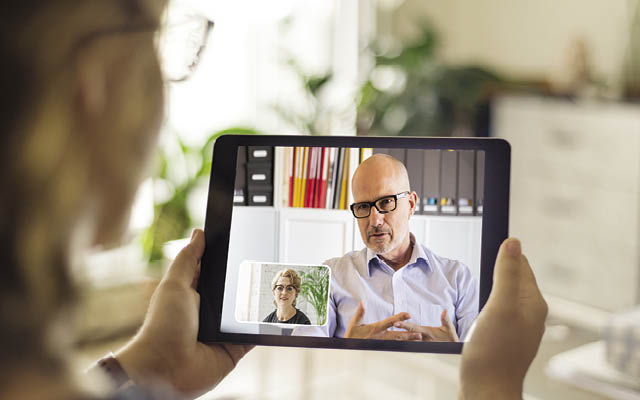The practice of telehealth accelerated rapidly during the pandemic, when keeping physical distance became a key to staying healthy. The option of using video and messaging in place of office visits had existed for years, but doctors and patients worried about pitfalls: Would patients and providers be able to forge a strong connection via video? Could practitioners make accurate assessments and diagnoses without a physical meeting?
Happily, says Susan Blum, MD, MPH, the answer is usually yes.
“Some people were concerned about what patients might lose out on, but I think they’re getting more,” says the founder of Blum Center for Health and assistant clinical professor at the Icahn School of Medicine.
For her, telemedicine appointments are often more collaborative than in-person ones. “I can put images from the radiologist or a scan on the screen and have patients see what I see,” says Blum. “It’s more intimate than people realize.”
As an integrative doctor, she also values the patient portal for sharing easily forgotten details, like a supplement list.
Another benefit is choice. “You can work with any provider you want,” says functional-medicine practitioner Peter Kozlowski, MD. “You don’t have to go to the one person in your neighborhood.”
When Kozlowski moved from Chicago to Bozeman, Mont., in 2020, he put his practice online — and he does miss some aspects of in-person visits. “It’s a different type of connection with telemedicine,” he says. “I feel like I have a slightly stronger connection with patients I’ve met at least once in person.”
But, he continues, “I can still do 99 to 100 percent of the things with telemedicine that I can do in person.”
Telemedicine is not the right tool for every visit: If you have a broken leg or a suspect lump, only an in-person exam will do. “For acute-care medicine, you usually have to go see someone,” says Blum. But for those with chronic conditions, the chance to consult more regularly about lab tests and other issues can be welcome.
Finally, telemedicine increases healthcare access. Blum has noticed fewer no-shows and cancellations now, perhaps because the act of logging on is so much easier than driving to a clinic, especially when you feel ill.
This was excerpted from “The Future of Health” which was published in the July/August 2021 issue of Experience Life magazine.





This Post Has 2 Comments
The paramount need for any healthcare provider is to have better patient services, which telehealth systems help while still assisting physicians to refine and improve their private practice.
Telehealth really helps providers to easily connect with patients on a large scale. Using video conferencing tools and machine learning technologies with the help of each patient’s case has enabled better diagnosis for each one.
Telehealth allows providers to track when and how their patients take their medication. Physicians can now track their patients’ welfare over long distances using high-tech medical equipment.
These days many healthcare systems like Ongo Care, TelaDoc, PlushCare, and many others fully rely on Telehealth. It helps doctors from appointments to prescribing medications. Many healthcare providers use Telehealth as a tool that boosts the treatment of patients with very little time.
The most important requirement for any healthcare practitioner is to deliver improved patient care, which telehealth solutions support while also helping doctors to develop and enhance their private practices.
Telehealth enables healthcare professionals to quickly and easily connect with a large number of patients. With the aid of each patient’s case, improved diagnosis has been made possible for each one using video conferencing tools and machine learning technologies.
Telehealth enables healthcare professionals to monitor how and when patients take their medications. Modern medical technology allows doctors to monitor the health of their patients from a distance.
Today, telehealth is widely used in healthcare systems like Ongo Care, TelaDoc, PlushCare, and many others to manage everything from patient appointments to medicine.